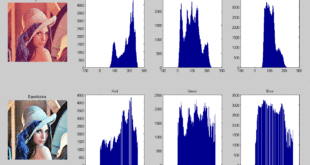Quantum computing is a groundbreaking field with the potential to revolutionize various industries, from cryptography to materials science. However, the development of quantum hardware is still in its early stages, leaving a gap between the potential of quantum algorithms and the means to run them efficiently. But there’s a hero on the horizon: Graphical Processing Units (GPUs). These high-performance processors designed for graphics tasks have recently shown great promise in running complex quantum algorithms.
GPUs are specialized processors designed for high-performance computing tasks, originally created for graphics processing but now adopted in various domains. Their ability to perform massively parallel computations is well-suited for complex quantum algorithms. Quantum algorithms often involve simulating the behavior of numerous qubits simultaneously, a task perfectly aligned with the parallel processing capabilities of GPUs.
Additionally, GPUs are renowned for their speed, capable of executing trillions of floating-point operations per second. Quantum algorithms can be highly computationally intensive, making the speed of GPUs essential for efficient execution.
GPUs are used in embedded systems, mobile phones, personal computers, workstations, and game consoles. Modern GPUs are very efficient at manipulating computer graphics and image processing. Their highly parallel structure makes them more efficient than general-purpose central processing units (CPUs) for algorithms that process large blocks of data in parallel. In a personal computer, a GPU can be present on a video card or embedded on the motherboard. In certain CPUs, they are embedded on the CPU die.
So, how do GPUs come to the rescue in the realm of quantum computing?
In recent years, researchers have been exploring the integration of GPUs into quantum computing. To understand this, let’s dive into the technical nitty-gritty.
Quantum algorithms, unlike classical ones, often deal with a large number of qubits, the fundamental units of quantum information. These algorithms require heavy-duty processing power to simulate and execute. Here’s where GPUs shine. They are experts in parallel processing, which means they can break down a massive problem into smaller tasks and solve them all at once. In the quantum world, where numerous qubits need to be simulated simultaneously, the parallel processing capabilities of GPUs are a game-changer.
Speed is another ace up the GPU’s sleeve. These processors are blazing fast, capable of performing trillions of operations per second. When it comes to running intricate quantum algorithms, this speed is not just a luxury; it’s a necessity.
Researchers have been busy developing software tools that enable quantum algorithms to run on GPUs. The results have been nothing short of astonishing. For instance, in 2019, a team of researchers at Google used GPUs to run Shor’s algorithm to factor a 2048-bit number. This was a significant milestone because it’s the first time Shor’s algorithm was used to factor a number of such cryptographic significance.
The potential of GPUs in quantum computing applications is vast. They can be used for quantum simulation, quantum machine learning, and quantum cryptography. Here’s a quick look at each:
1. Quantum Simulation: GPUs can simulate quantum systems, enabling the study of molecules and materials, leading to advancements in drug discovery and materials design.
2. Quantum Machine Learning: GPUs can train and run quantum machine learning models. These models have the potential to outperform classical machine learning models, opening doors to solving complex problems like drug discovery and financial modeling.
3. Quantum Cryptography: GPUs can implement quantum cryptographic algorithms, which are incredibly secure compared to classical cryptography. This advancement can safeguard sensitive data against unauthorized access.
They can also enhance quantum machine learning models, capable of addressing various complex problems, from drug discovery to financial modeling.
Of course, there are some challenges to overcome. GPUs were not initially designed for quantum computing, which means they may not be as efficient as dedicated quantum computers. Moreover, programming GPUs for quantum applications requires specialized tools, making it a complex process for those who aren’t well-versed in quantum computing. Additionally, GPUs can be expensive, limiting access for some researchers and startups.
Despite these challenges, GPUs offer a promising bridge to quantum computing. It allows researchers and organizations to leverage the current scale of GPU computing power to explore quantum algorithms before the widespread availability of mature quantum hardware.
In essence, GPUs are rapidly becoming essential allies in the quest for quantum computing. While quantum hardware continues to evolve, GPUs are already proving their worth by enabling the efficient execution of complex quantum algorithms. As GPU technology advances and programming tools become more accessible, the future of quantum computing looks increasingly promising.
In a nutshell, the potential of GPUs for running complex quantum algorithms is a game-changing development. These powerful processors expedite research, reduce computational costs, and provide valuable insights for various quantum applications. With GPUs in the mix, we might not have to wait for the quantum era to fully unfold – it’s already here, and it’s evolving at quantum speed!
 International Defense Security & Technology Your trusted Source for News, Research and Analysis
International Defense Security & Technology Your trusted Source for News, Research and Analysis
